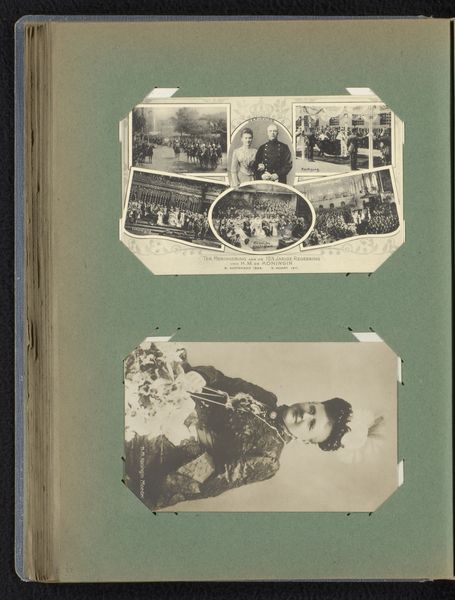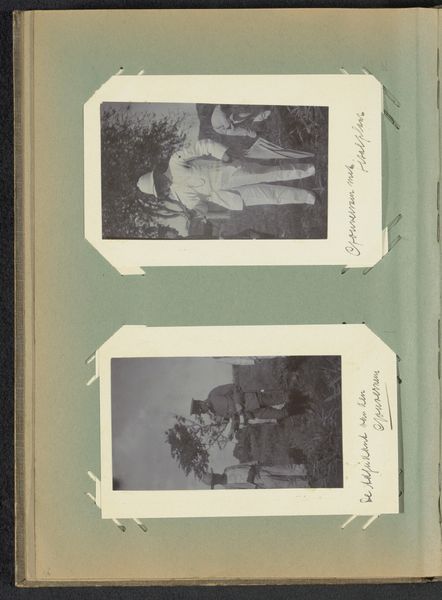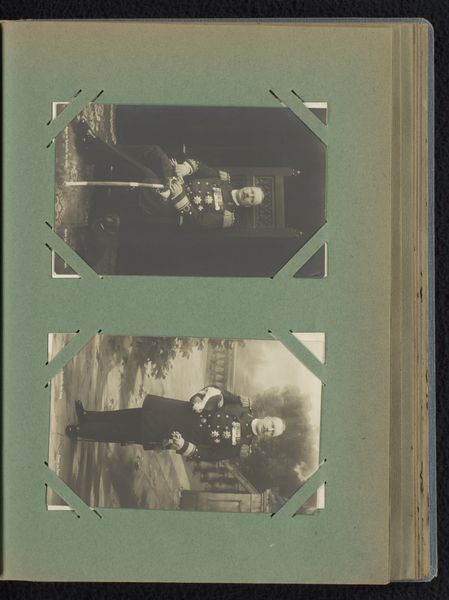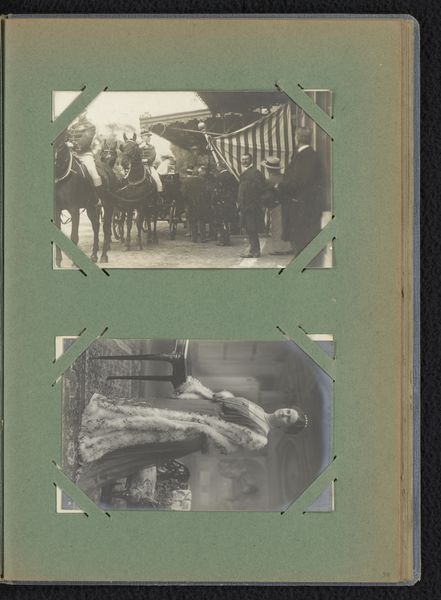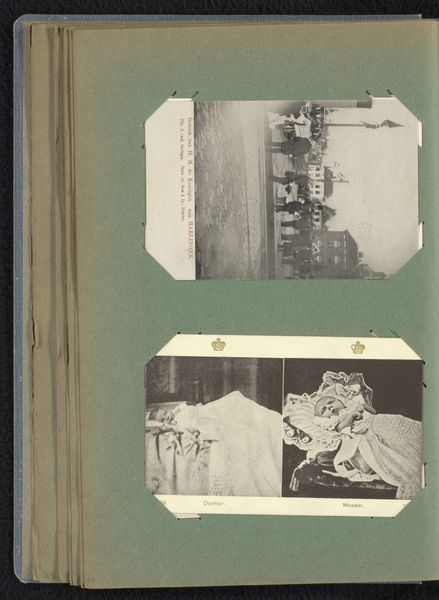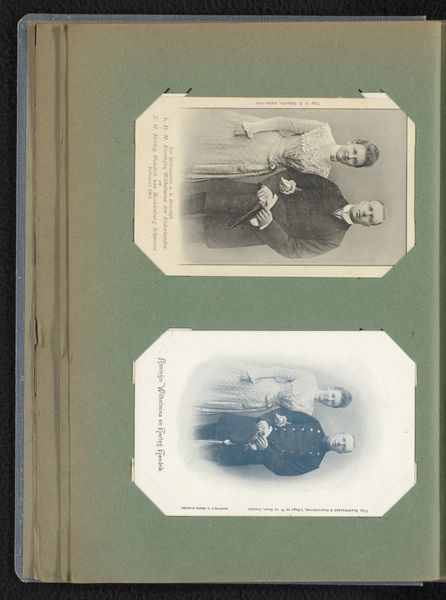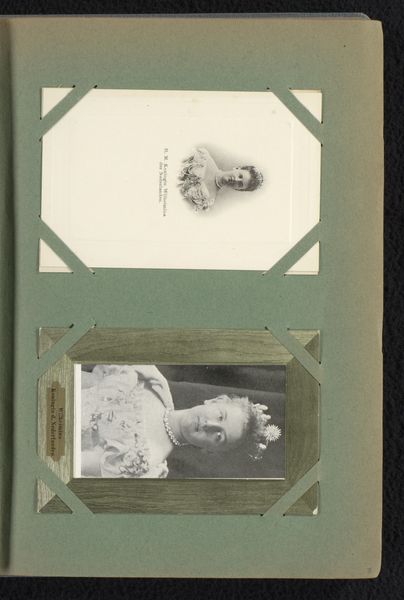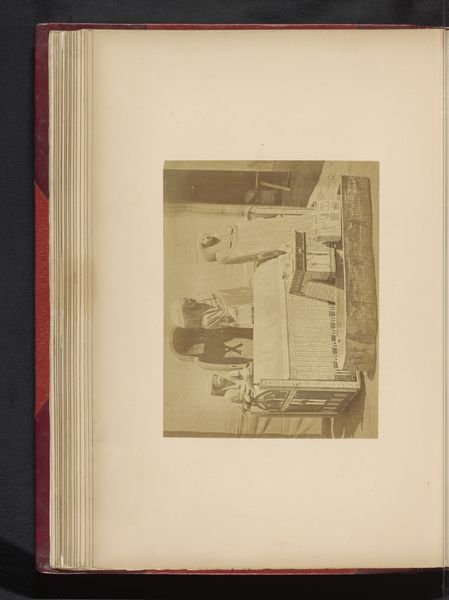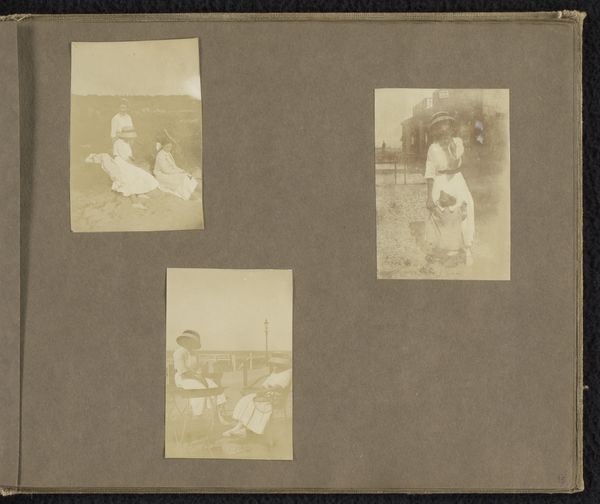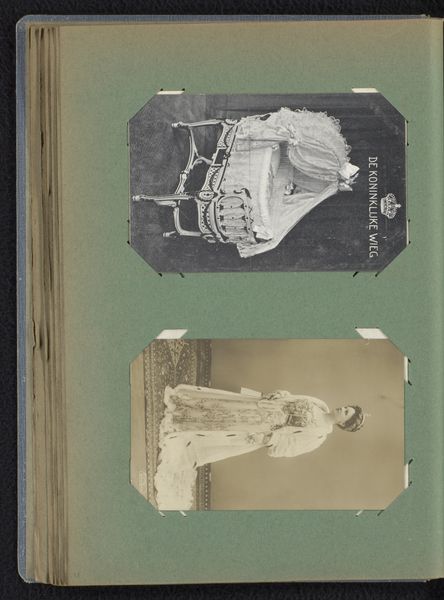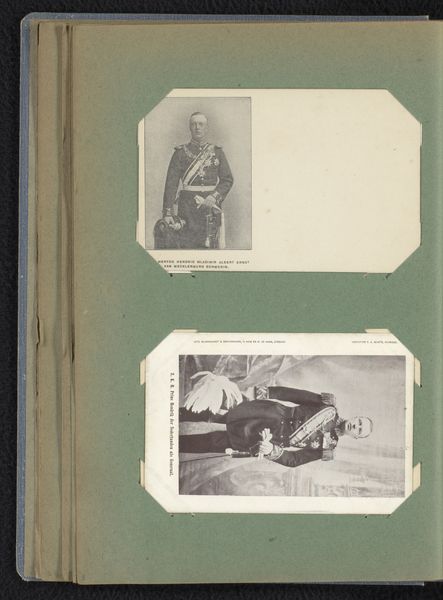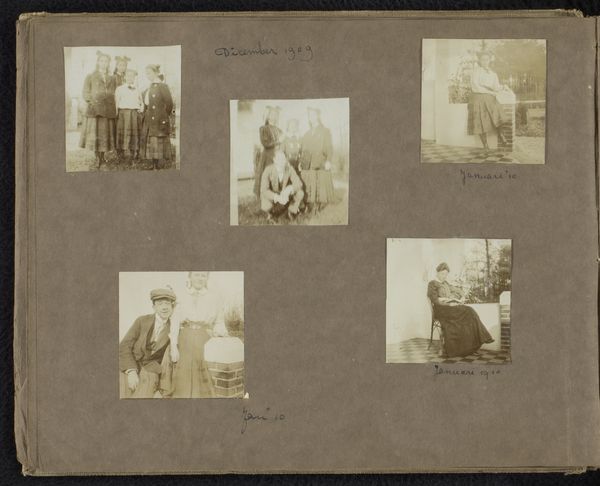
Twee prentbriefkaarten met portretten van koningin Wilhelmina en prins Hendrik te paard c. 1905 - 1915
0:00
0:00
guydecoralco
Rijksmuseum
Dimensions: height 139 mm, width 89 mm
Copyright: Rijks Museum: Open Domain
Editor: Here we have two albumen print postcards dating from around 1905-1915 by Guy de Coral & Co., both portraits of Dutch royalty, Queen Wilhelmina and Prince Hendrik. They seem to represent two very different modes of leadership. Wilhelmina's very poised in a domestic setting. Hendrick's on horseback out in nature. What can you tell me about these postcards? Curator: Well, beyond being straightforward royal portraiture, we need to understand how these images circulated. As postcards, they weren't simply artistic representations but also important tools for projecting royal power and cultivating a national identity. Editor: So they weren't just pretty pictures, but tools for solidifying the monarchy’s image? Curator: Exactly. The choice to depict Wilhelmina in a posed studio portrait with fine garments, versus Hendrik outdoors on horseback, highlights very distinct aspects of royal authority. How does that dynamic strike you? Editor: It’s interesting. The Queen appears more...managed. While Hendrik is actively engaged with his domain, almost as a leader *of* the people through action, rather than the leader *over* the people suggested in Wilhelmina’s portrait. But why two different portraits on postcards, bound in a book? Curator: Think about it from a historical context. Wilhelmina had significant political power as a monarch. However, Prince Hendrik needed to project strength through his position to show masculine royal leadership, as well. Thus, they become collectible royal marketing tools to consolidate the family brand! It provides contrasting representations. Editor: So, these weren't just images; they were carefully crafted propaganda in postcard form! I hadn't considered that postcards could serve such a function. Curator: Exactly. Understanding the socio-political forces at play helps us decipher the messages embedded within these seemingly simple portraits. They participated in shaping how the public viewed the monarchy, creating an illusion of familiarity. Editor: That makes so much more sense. Thinking about these postcards as pieces of a bigger historical narrative completely changes how I see them.
Comments
No comments
Be the first to comment and join the conversation on the ultimate creative platform.
